The LIC AAO Mains Exam 2025 is one of the most competitive banking and insurance exams in India, testing candidates on reasoning, quantitative aptitude, general awareness, and English. Among all these sections, Reasoning Ability plays a crucial role in deciding your final score and within reasoning, puzzle questions are often the toughest yet most scoring part.
Crack LIC AAO Mains 2025 with These Most Asked Puzzles Questions
Cracking the LIC AAO Mains Exam 2025, scheduled for 8 November 2025, requires not just strong concepts but also smart practice. Puzzles play a crucial role in the reasoning section, often determining the difference between a good score and a top score. Focusing on the most frequently asked puzzle types can help candidates improve accuracy, save time, and boost their overall performance in the exam.
Why Puzzle Questions Are Important in LIC AAO Mains
In the LIC AAO Mains reasoning section, puzzles test your logical thinking, data interpretation, and analytical skills. Typically, you can expect 3–4 sets of puzzles, covering around 20–25 marks. Solving these efficiently can drastically boost your overall score.
Common puzzle question types include:
- Floor-based puzzles
- Seating arrangement (linear, circular, square)
- Month and date-based puzzles
- Box-based or variable-based puzzles
- Blood relation and direction-based puzzles
Most Asked Puzzles Questions in LIC AAO Mains 2025
Q1. Statement: In a well-known school, the canteen earlier sold cream biscuits that were very popular among students. However, parents began complaining that children were skipping their proper lunch and buying only cream biscuits. The school doctor also noticed an increase in toothaches and stomach-related complaints among students, which he linked to excessive biscuit consumption, so the school has stopped the sale of cream biscuits.
What could be the possible reason behind stopping the sale of cream biscuits in the school canteen?
(a) Cream biscuits were very costly and beyond students’ pocket money.
(b) Students were skipping their healthy meals and facing health problems due to excessive consumption.
(c) Teachers wanted to introduce new food items in the canteen menu.
(d) Parents demanded only homemade food to be served in the canteen.
(e) The school principal disliked cream biscuits personally.
Directions (2-4): Each question below is followed by two statements numbered I and II. You have to decide whether the data provided in the statements are sufficient to answer the question. Read both statements carefully and give answer:
Q2. Six persons P, Q, R, S, T, U sit in a row and face north. Who sits immediately to the right of U?
Statement I: P sits third to the left of T. R sits to the right of P. U sits to the left of T. Two persons sit between S and R
Statement II: One person sits between Q and P. S sits to the left of Q. U sits second to the left of Q. T is not an immediate neighbour of P and Q.
(a) Data given in both statements I and II together are sufficient to answer
(b) Data given in statement I alone is sufficient to answer
(c) Data given in statement II alone is sufficient to answer
(d) Data given in both statements I and II together are not sufficient to answer
(e) Data given in either statement I or statement II alone is sufficient to answer the question
Q3. Six persons A, B, C, D, E, and F submit their projects on six different days of the week starting from Monday to Saturday. Who submits the project on the first day of the week?
Statement I: B submits project immediately before E but after A. Two persons submits project between B and D who submits project immediately before A. F submits project after C but before E.
Statement II: E submits project before D. More than three persons submit the project after B. D submits the project two persons after B. C submits the project before F. As many persons submit the project before F as after B.
(a) Data given in both statements I and II together are sufficient to answer
(b) Data given in statement I alone is sufficient to answer
(c) Data given in statement II alone is sufficient to answer
(d) Data given in both statements I and II together are not sufficient to answer.
(e) Data given in either statement I or statement II alone is sufficient to answer the question
Q4. Six boxes A, B, C, D, E, and F are kept one above the other in a stack, not necessarily in the same order. Which box is kept at the second position from the top?
Statement I: Box C is kept above box E. Box A is kept three boxes below box E. Box D is kept adjacent to box E but below box F
Statement II: Box F is kept above box D. Box A is kept below box B. Box E is placed above box A. More than two boxes are placed between Box B and box F.
(a) Data given in both statements I and II together are sufficient to answer
(b) Data given in statement I alone is sufficient to answer
(c) Data given in statement II alone is sufficient to answer
(d) Data given in both statements I and II together are not sufficient to answer
(e) Data given in either statement I or statement II alone is sufficient to answer the question
Q5. Seven letters are arranged to form a meaningful word. I is placed at the extreme left end. Three letters are placed between I and U. Letter E is placed two places away from letter U. D and E are placed adjacent to each other. N is placed to the left of U. Only one letter is placed between N and L. C was also one of the seven letters. Now, if only one meaningful word is formed then, which letter is third letter from the left end of the newly formed word. If no meaningful word is formed, mark X as your answer, and if more than one such word is formed, mark Y as your answer?
(a) E
(b) D
(c) X
(d) C
(e) Y
Directions (06-10): Read the given information carefully and answer the related questions:
Eight persons of a three-generation family were born on same date and same month of different years – 1944, 1954, 1961, 1979, 1993, 1998, 2007, 2014. They are of different ages and likes different color. Their age is calculated with respect to the base year 2025.
Note: In a married couple, husband is older to his wife.
Age digit of K’s child is reverse to the age digit of K’s father. Age of P’s daughter is equal to the sum of ages of R and the one who likes pink. Age of the one who likes grey is the cube of a number. Four persons were born between N and the one who likes grey. Age difference between N and the one who likes yellow is same as the age difference between P’s only granddaughter and the one who likes yellow. Q is sister-in-law of K and has two children. L’s mother is immediate older to L who does not like pink. Three persons were born between L and the one who likes green. P is three persons older to the one who likes orange. Age difference between K and the one who likes red is 17 years. O does not like pink and blue. One of the parents of M is not alive. Age of the one who likes white is an odd number.
Q6. Which of the following statement is true?
(a) Q likes grey
(b) L’s grandmother likes blue
(c) Total age of O and K is multiple of 4
(d) M is younger to at least four persons
(e) M’s uncle is older to P
Q7. Choose the incorrect combination.
(a) 1979 – L’s father – yellow
(b) 1944 – Q’s father-in-law – red
(c) 1998 – O’s brother – grey
(d) 1961 – M’s mother – blue
(e) 2007 – R’s niece – pink
Q8. The number of persons older to K’s mother is one less than the number of persons younger to the one who likes ____.
(a) Blue
(b) Grey
(c) White
(d) Pink
(e) None of the above
Q9. The one who is two persons older to L’s cousin was born in which year?
(a) 1998
(b) 1976
(c) 1993
(d) 1961
(e) 1954
Q10. What is the total age of females who are in second generation?
(a) 96 years
(b) 91 years
(c) 78 years
(d) 59 years
(e) None of the above
Directions (11-19): Read the given information carefully and answer the related questions:
Twelve persons sit in two parallel rows of six persons each. Persons- A, B, C, D, E and F face north, seated in row 2. Persons – M, N, O, P, Q, and R face south, seated in row 1. Each person in Row 1 faces exactly one person in Row 2. All the persons were born on different dates of a month having even number of days.
Age of F is a square of a number. The age of the person who sits second to the right of the one who sits opposite of F, is two times the age of F. Only one person sits between F and B, and both of them doesn’t sit at any of the extreme ends. The difference between the ages of B and M is 24 years and B is younger to M. M is the only neighbour of O and ages of M and O is an odd number. Three persons sit between M and Q who is 8 years elder than C. C sits immediate right of B. Q’s age is divisible by 3. The difference between the ages of M and C is 7 years. D sits second to the left of C and D is 11 years elder than B. The difference between the ages of C and D is equal to the difference between the age of P and N. N is younger than P. A doesn’t sit at the extreme ends and age of A is one-fourth the age of N. Age of O is square of the age of B. Age of R is half the age of Q. The one who faces R sits second to the left of E who is 2 years younger than D. More than two persons sit between E and the one who faces P.
Q11. What is the sum of the ages of the N, the one who sits second left of A, and the one who sits immediate left of M?
(a) 50 years
(b) 55 years
(c) 59 years
(d) 46 years
(e) None of these
Q12. Who among the following sits third to the right of the one who faces P and what is the age of that person?
(a) A, 6 years
(b) C, 22 years
(c) F, 9 years
(d) F, 3 years
(e) A, 3 years
Q13. Four of the following five are alike in a certain way and so form a group. Which one does not belong to the group?
(a) O
(b) D
(c) F
(d) A
(e) R
Q14. Which of the following statements is not correct?
(a) B is 5 years old and faces P
(b) C sits opposite to N
(c) The difference between the age of M and D is a prime number.
(d) The number of persons sit left to the who is 22 years old is same as the number of persons sit to the right of R.
(e) E sits opposite to the person whose age is a square of an odd number.
| Related Posts | |
| LIC AAO Syllabus | LIC AAO Salary |
| LIC AAO Previous Year Question Paper | LIC AAO Cut Off |
| LIC AAO Expected Cut Off 2025 | |




 IBPS RRB PO Mains Shift Timings and Repo...
IBPS RRB PO Mains Shift Timings and Repo...
 Last Minute Preparation Tips for IBPS RR...
Last Minute Preparation Tips for IBPS RR...
 Bank of India Apprentice Apply Online 20...
Bank of India Apprentice Apply Online 20...







